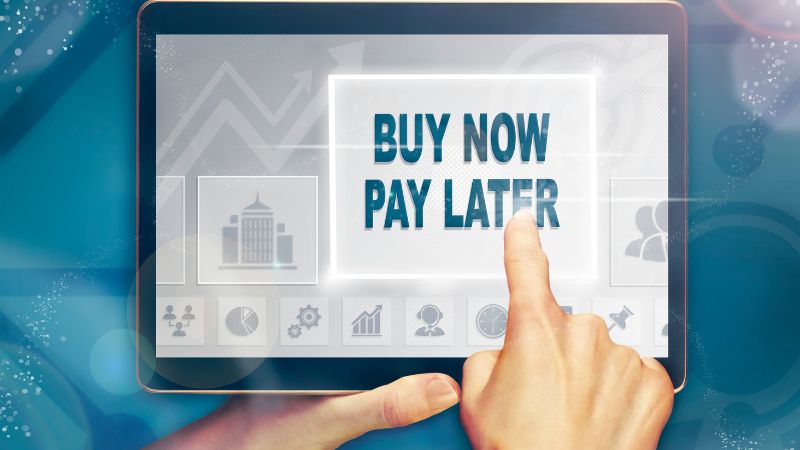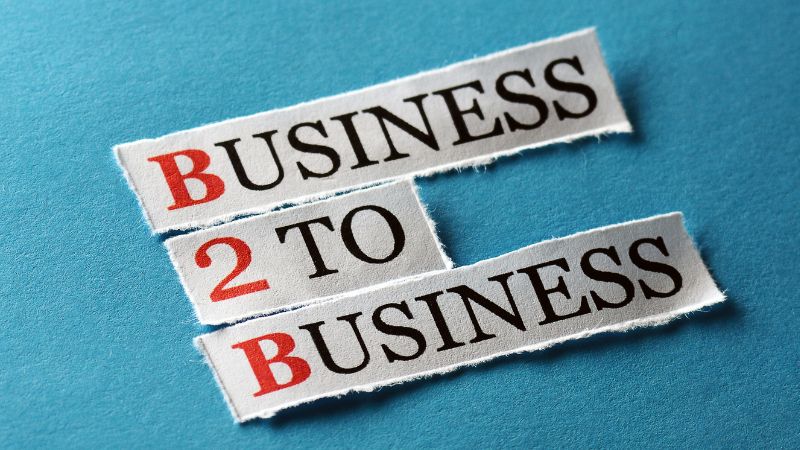Categories
Buy Now Pay Later for Businesses

Spreading the cost of payments has been a feature of both personal and business finance for decades, but as technology speeds up the sector, adding new and innovative ways of financing, can ’buy now, pay later’ (BNPL) systems really offer businesses in the UK a better and more flexible way of working? What is BNPL and how does it differ from traditional banking?
Table of Contents
Understanding BNPL
Can Businesses Use Buy Now, Pay Later?
B2B BNPL vs. Invoice and Supply Chain Finance
Latest Business Financing Case Studies
How BNPL Can Increase Sales
BNPL and Debt Recovery
Applying for BNPL
Understanding BNPL
By now, pay later is nothing new. Many of us first encountered systems like it with catalogue payments in the pre-internet days, work with it regularly with asset finance options such as hire purchase or finance leasing, and see it growing in both online and offline B2C companies with the rapidly spreading growth of Klarna, PayPal Credit and Clearpay.
But shopping for goods costing a few hundred or thousand pounds online, or offsetting the risk by using assets as collateral is one thing - can BNPL actually work in the business-to-business sector, offering something to both suppliers looking to get their invoices paid quicker, and customers wanting to spread the cost of services?
Can Businesses Use Buy Now, Pay Later?
A number of new startups have sprung up over the last few years offering exactly this. With accounts on offer that provide up to £1,000,000 in instant-pay options based on the BNPL model, it is a growing system for rapid invoice payment that has several advantages - not least of which is its ease of use.
With that capital in the bank without delay, you can expand and grow, undertaking projects with greater ease and ultimately making more money.
But is it really all upside? What are the costs and how does it differ from more traditional banking options?
B2B BNPL vs. Invoice and Supply Chain Finance
Let’s face it; systems for spreading the cost of invoices over twelve months or more have existed for a lot longer than buzzy new-tech B2B BNPL.
Invoice finance is an established system for businesses struggling waiting for payments from customers, while supply chain finance offers rapid payment to suppliers. Both are traditional finance systems that many companies have used for decades.
What makes this modern upstart any better?
The Cost of BNPL vs. Traditional Finance
One of the headline claims for many BNPL systems is that there’s no interest. Instead, in line with many contemporary finance options, many companies offer B2B BNPL based on a subscription model.
It’s difficult to say. Supply chain finance places the onus of interest on the buyer, where B2B BNPL clearly places the fees in the hands of the supplier. From a buyer perspective then, there are definitely cash advantages to the system.
When compared to invoice discounting, the lean may be towards the older model rather than BNPL, but again there are many factors to consider, not least of which is the level to which the service is used.
Single-use invoice discounting, where a loan is generated against the accounts payable for one bridging injection of capital, is more cost-effective than an ongoing BNPL subscription, but when longer-term factoring business lines of credit are involved, BNPL’s subscription fee becomes a lot more reasonable.
In all cases though, it’s clear that the impact on the business is not zero. There is a cost implication for the service that must be fully understood and strategically analysed before signing up.

The Administrative Impact of B2B BNPL
One of the major selling points of BNPL is its simplicity for both the selling business and their customers. Based on modern banking technology, it is quick to set up and extremely simple to manage. Furthermore, from the customer perspective, using BNPL is a breeze.
When compared to the relatively complex application and set up of medium-to-long-term invoice factoring, there is a clear winner.
However, B2B BNPL’s ease of use does significantly limit its application. It is a tech-modern solution that’s only available for online platforms and has zero use in offline transactions. For many providers, it relies wholly on full banking integration that may not be available for many businesses. It is administratively superior wherever it can be used, but simply is not there for everyone.
Scope - How Size of Business Affects B2B BNPL
Buy now, pay later for businesses in the UK has been specifically targeted for SMEs. While headline account limits of £1,000,000 are eye-catching and impressive to many, many providers simply don’t have the reach of larger traditional invoice factoring and supply chain finance. Companies that utilise larger lines of credit may find BNPL simply too small for their use.
Similarly, however, traditional invoice and supply chain finance has long left smaller and micro enterprises behind, focusing instead on larger businesses. While applying for small amounts of invoice finance is technically possible, the administrative overhead is such that it’s rarely worthwhile - BNPL does not suffer this same problem.

International BNPL - Trade Finance Advantages
Buy now, pay later has several benefits when considered on a global scale. Due to its integration with modern banking technology, it is easily possible for a business setting up BNPL to increase its customer base overseas.
BNPL offers many supply chain benefits for international trade, not least the swiftness of payment that increases trust between supplier and customer, and significantly lowers the risk for the exporter.
Compared to traditional trade finance options, BNPL can be a superior choice - enough so that it has been embraced rapidly by the international community.
BNPL vs. Traditional Finance - Conclusion
While BNPL may not be for everyone, it has enough advantages that it is worth investigating further for any B2B business that is considering invoice or supply chain finance in the near future.
Latest Business Financing Case Studies
Below is a snapshot of our latest case studies, in which we broker finance solutions for businesses of all shapes and sizes, negotiating the best rates and terms and advising on the correct finance routes:
How BNPL Can Increase Sales
Using BNPL improves the ease by which your customers can pay you.
It opens your business up to effectively offer your customers a minimal-effort credit plan with which to pay you, and just like the boost in sales hire purchase has given the retail sector for many decades, it will increase your B2B sales.
From the customer perspective, BNPL is enticing. They can suddenly afford to contract you for the services they really want, rather than those they can immediately pay for, spreading the cost throughout the year.

From the other side of the coin, company A with its staged invoice plan will have to undertake the project with only £20,000 in the bank to fund its own needs throughout, while by using BNPL, company B gets their £40,000 right away - before they’ve written a single line of code. They now have enough capital to afford to purchase better equipment, improve their own software choices, and even employ an additional team member to work on the project.
BNPL can be extremely powerful in this way, helping to propel businesses that offer it to the top of any tendering selection.
BNPL and Debt Recovery
A further advantage of BNPL is that the onus for recovery of the outstanding amount lies with the BNPL provider and not with your business. For many companies, this benefit alone makes the cost of a BNPL subscription effectively pay for itself, saving many hours of unpleasant communication between you and any struggling customers.
You get your money up-front, and never have to worry about it after that.
Applying for BNPL
The process to apply for buy now, pay later is relatively simple - but choosing the best BNPL provider is not.
Subscription fees, differences in terms, administration requirements, and established trust are all factors that you will need to consider when making the choice on which company you choose. Why not leave that part of the process to the professionals?
At Clifton Private Finance, our team have their finger on the pulse of B2B BNPL and are here to help you make the right choice for your company’s future stability - we can even look at invoice finance and other traditional options that may be more suitable for your business.
Contact us today to ask more about buy now, pay later for your business.













